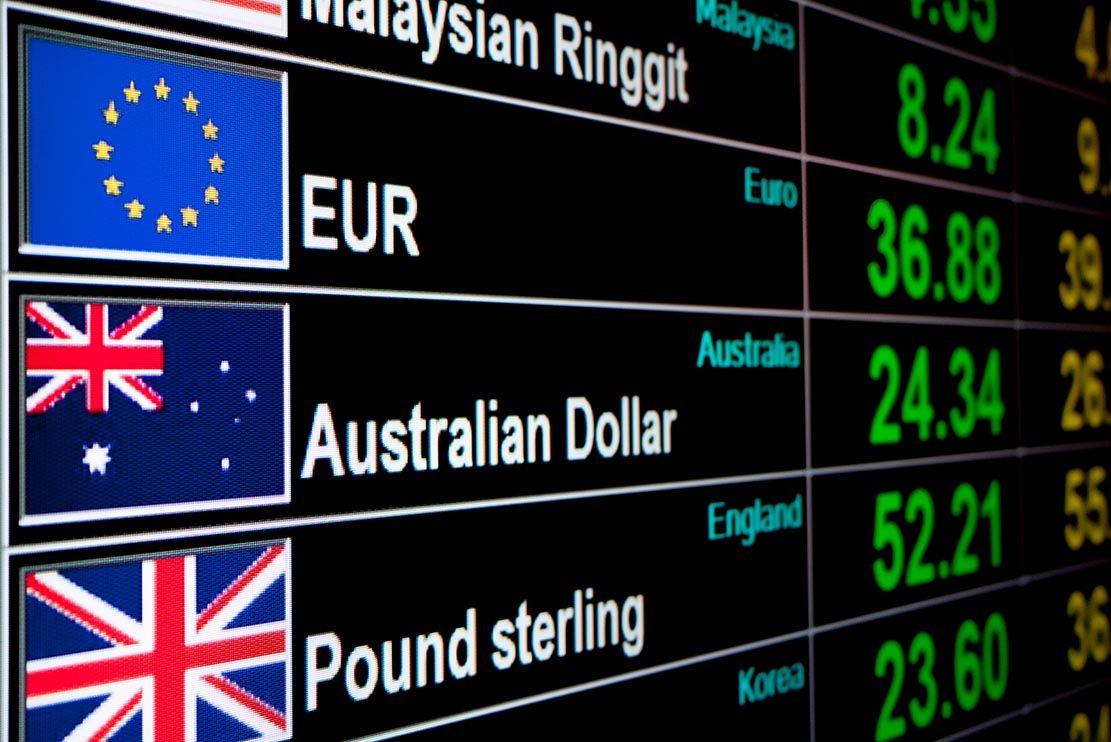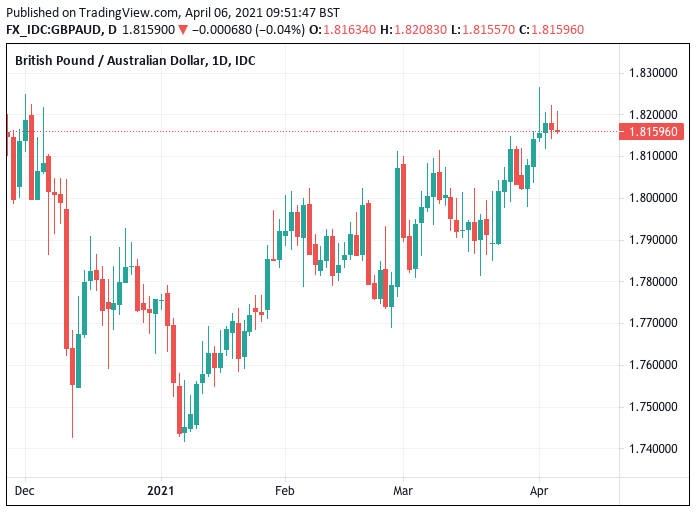Australian Dollar: No Help from the RBA but Undervaluation is Supportive
- RBA to remain a stone around AUD's neck says ING
- RBA maintains dovish guidance in April policy statement
- But AUD now undervalued, downside therefore limited

Image © Adobe Stock
- GBP/AUD rate at publication: 1.8158
- Bank transfer rates (indicative guide): 1.7522-1.7650
- Money transfer specialist rates (indicative): 1.7700-1.8030
- More information on securing specialist rates, here
- Set up an exchange rate alert, here
The Australian Dollar will not receive any support from Reserve Bank of Australia policy in the foreseeable future shows new analysis from a leading investment bank, although the currency is now notably undervalued and this could provide a cushion.
Analysts at global investment bank ING say the Australian Dollar will find little support from its central bank as the Reserve Bank of Australia (RBA) signals it is unlikely to remove its quantitative easing programme or raise interest rates until a material improvement in the country's labour market is observed.
Given that the labour market has a steep hill to climb the RBA is therefore likely to retain a cautious tone over coming months, which will be reflected in a softer currency.
"Monetary policy looks unlikely to help AUD recover from its grim period," says Francesco Pesole, FX Strategist at ING Bank N.V. in London.
Above: It has taken three months for GBP/AUD to recover December 2020's decline.
The RBA on Tuesday delivered its April policy update and left the cash rate unchanged at 0.10% and the target for the yield on the 3-year Australian government bond was retained at 0.10%.
The decisions were in line with market expectations and therefore ensures no major impact on Aussie Dollar exchange rates.
But, markets are forward looking in nature and the guidance on the outlook was cautious with the statement maintaining that:
"The Board will not increase the cash rate until actual inflation is sustainably within the 2 to 3 per cent target range. For this to occur, wages growth will have to be materially higher than it is currently. This will require significant gains in employment and a return to a tight labour market. The Board does not expect these conditions to be met until 2024 at the earliest".
RBA policy remains a major driver of Australian Dollar value, alongside global investor sentiment and commodity market dynamics.
While trends in global stock markets and commodity prices have offered some support to the currency over recent months - indeed the Australian Dollar was one of 2020's best performers - the same cannot be said of the RBA which maintains an aggressive monetary policy stance.
The RBA has slashed Australian interest rates and introduced a form of quantitative easing in order to cushion the blow of the global covid crisis. The move is intended to keep the cost of finance in the Australian economy as low as possible in order to help businesses and consumers; however an offshoot of these policies is a weaker Aussie Dollar.
{wbamp-hide start} {wbamp-hide end}{wbamp-show start}{wbamp-show end}
By lowering interest rates and capping bond yields at low levels (0.1% on the three-year bond) the RBA has effectively reduced the attraction of Australian financial assets in the eyes of international investors who have in the past snapped up Australian bonds and financial assets to take advantage of their superior yield.
The Australian Dollar has now fallen 1.0% against the Pound and U.S. Dollar over the course of the past month, taking its losses in 2021 to 2.33% and 0.55% respectively.
ING says the Australian Dollar will likely remain anchored alongside Australian interest rates, "due to the RBA dovish stance and less upbeat expectations on the employment recovery," says Pesole.
ING note that the RBA's ability to cap the yield on three-year bonds is particularly effective, which matters as currencies have been shown to be highly reactive to short-term yields.
But research from ING also shows the Aussie Dollar is now close to 3.0% undervalued against the U.S. Dollar, which could provide a cushion against any substantial downside.
Looking at AUD/USD, ING notes that the recent drop (3.3% over the past two weeks) was not fully warranted by a similarly-sized deterioration in the pair’s major short-term drivers.
"According to our short-term fair value model - which takes into account the short-term rate differential, the shape of the yield curve, relative equity performance, commodity prices and global risk appetite - AUD/USD is undervalued by 3.0%," says Pesole.
The above model from ING shows the mis-valuation is outside of the 1.5 standard deviation band, suggesting it is now at abnormal levels.
"This may imply, in turn, a more limited downside room for the pair in the short run," says Pesole.
The Australian-to-U.S. Dollar exchange rate is quoted at 0.7632 at the time of publication, down a quarter of a percent on the day. The 2021 high is at 0.8007 (Feb 25) and the low at 0.7531 (April 01).
The Pound-to-Australian Dollar exchange rate is meanwhile at 1.8178 with the 2021 high at 1.8265 (April 01) and the 2021 low at 1.7416 (Jan. 07).






